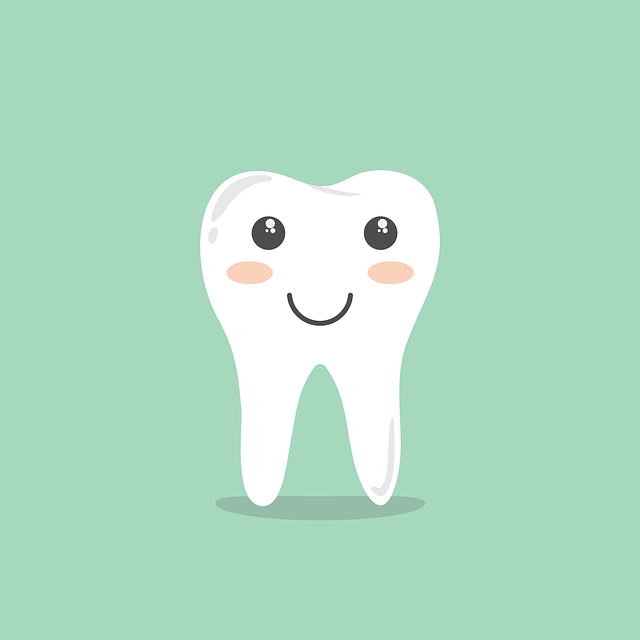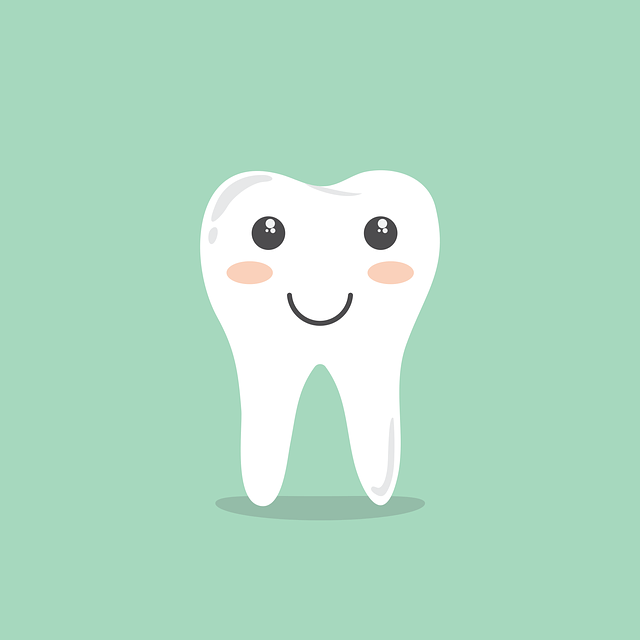The Fate of Your Smile: Insights into First Molar Extraction
Welcome to an insightful article that sheds light on a topic close to everyone’s heart, or rather, their mouth – the fate of your smile and the intriguing world of first molar extraction. While the idea of having a tooth removed may give you a shiver, it’s important to understand that there are instances where this procedure becomes necessary for the overall health and wellbeing of your pearly whites. Join us as we delve into the details of first molar extraction, unraveling the mysteries behind this dental practice with a friendly and informative approach.
1. Understanding First Molar Extraction: A Key to Preserving Your Smile’s Future
First molar extraction is a dental procedure that aims to preserve the overall health and appearance of your smile. It is crucial to understand the importance of this procedure and how it can contribute to your long-term dental well-being.
Why is first molar extraction necessary?
First molars, which are also known as six-year molars, usually erupt between the ages of six and seven. These teeth play a vital role in chewing and grinding food, facilitating proper digestion. Unfortunately, they are also prone to common dental issues such as decay, overcrowding, or impaction. If left untreated, these problems can lead to more severe complications like infections or damage to adjacent teeth.
- Extracting a problematic first molar helps prevent the spread of decay or infection to neighboring teeth.
- The procedure can relieve pain and discomfort caused by common dental issues like overcrowding or impaction.
- If needed, the extracted molar can be replaced with a dental implant or bridge, restoring the function and aesthetics of your smile.
By understanding the reasons behind first molar extraction and its potential benefits, you can make informed decisions regarding your oral health and maintain a smile that radiates confidence for years to come.

2. Why First Molar Extraction Matters for Your Dental Health and Aesthetics
The extraction of a first molar may seem daunting, but it is a crucial step in maintaining your dental health and aesthetics. Here are a few reasons why this procedure matters:
1. Preventing overcrowding: First molars, as the largest teeth in the mouth, play a significant role in the alignment of your other teeth. If a first molar is extracted, it creates a space that neighboring teeth may shift into, causing overcrowding and misalignment.
- By removing a first molar, you can avoid future orthodontic treatments or the need for more invasive procedures such as jaw surgery or tooth extraction.
- It allows your remaining teeth to maintain their proper alignment, preserving your overall dental aesthetics.
2. Preserving bone health: When a first molar is extracted, the absence of its root can lead to bone resorption. This natural process occurs as the body reabsorbs the bone that once supported the tooth. Consequently, the jawbone in that area may deteriorate over time.
- Preserving a healthy jawbone structure is essential for supporting facial muscles and maintaining a youthful appearance.
- Without the necessary bone support, adjacent teeth may become loose or shift, further compromising your dental health and aesthetics.
Considering these factors, it becomes clear why first molar extraction is both important and beneficial for your long-term dental health and aesthetics. Consulting with your dentist will help determine if this procedure is necessary and guide you towards the appropriate treatment options.

3. The Science behind First Molar Extraction: Unveiling the Hidden Benefits
The extraction of first molars is a common dental procedure that may seem daunting at first, but it actually brings several hidden benefits that you may not be aware of. Let’s take a closer look at the science behind first molar extraction and uncover why it can be beneficial for your overall oral health.
One of the primary reasons for extracting first molars is to create space for orthodontic treatment. By removing these teeth, the orthodontist can manipulate the remaining teeth more effectively, allowing them to shift and align properly. This creates a foundation for a straight and attractive smile, enhancing your self-confidence. In addition, removing first molars can aid in the correction of overbite or underbite, improving your bite alignment and preventing potential jaw-related issues in the future.
- First molars are prone to decay: Due to their location and shape, first molars are more susceptible to decay and cavities. By extracting them, you can prevent further deterioration and costly dental treatments in the future.
- Reduced risk of crowding: Removing first molars can help alleviate overcrowding, which can lead to misalignment of your teeth. This can have a positive impact on your overall dental health, making it easier to clean your teeth properly and reducing the risk of gum disease.
Don’t worry if you need to undergo a first molar extraction; it’s a well-established and safe procedure that brings numerous long-term benefits. Trust your dentist or orthodontist, who will carefully evaluate your individual case to determine if this extraction is necessary for your specific needs. Ultimately, by embracing the science behind first molar extraction, you are investing in a healthier smile and a brighter future for your dental well-being.

4. Exploring the Reasons for First Molar Extraction: When and Why it May be Necessary
First molar extraction is a common dental procedure that may be necessary for a variety of reasons. Let’s explore when and why this procedure may be required, and how it can benefit your oral health.
There are several situations when a first molar extraction may be necessary:
- Severe tooth decay: When a first molar is extensively decayed, it can become unable to be saved through conventional treatments like fillings or root canals. Extraction may be the best option to prevent further damage and preserve oral health.
- Impacted wisdom teeth: Sometimes, the development of wisdom teeth can cause overcrowding and interfere with the positioning of neighboring molars. In such cases, extracting the affected first molar can help create space and prevent potential complications.
- Orthodontic reasons: In certain orthodontic cases, removal of a first molar might be necessary to correct overcrowding and achieve proper alignment of the teeth.
Extraction of the first molar may seem daunting, but it can ultimately contribute to maintaining optimal dental health, preventing future dental problems, and ensuring a healthy smile in the long run. If you suspect that you may require a first molar extraction, consult with your dentist, who can assess your specific situation and provide personalized advice.

5. What Happens After First Molar Extraction: A Step-by-Step Guide to Recovery
After getting your first molar extracted, it’s important to take proper care to ensure a smooth recovery. Here, we will guide you through the post-extraction process, step by step, so you know exactly what to expect:
- Initial Bleeding: It is normal to experience some bleeding immediately after the extraction. Bite on a clean gauze pad placed over the extraction site to control the bleeding. Remember to change the gauze pad every 30 minutes or as needed.
- Managing Pain: Discomfort is common after an extraction. To alleviate pain, take your prescribed pain medication as directed. You can also apply an ice pack on your cheek to reduce swelling and inflammation. Remember to avoid taking aspirin as it can increase bleeding.
- Oral Hygiene: Continue your regular oral hygiene routine, but be sure to avoid brushing the extraction site for the first 24 hours. Rinse your mouth gently with warm saltwater after meals to keep the area clean and promote healing.
Furthermore, here are a few additional tips to aid in your recovery:
- Eating and Drinking: Stick to a soft diet for the first few days to avoid causing any damage or discomfort. Opt for foods like yogurt, mashed potatoes, scrambled eggs, or soup. Drink plenty of fluids, but avoid using straws as the suction can dislodge the blood clot.
- Rest and Relaxation: Adequate rest is crucial for a speedy recovery. Take it easy for the first couple of days, avoiding strenuous activities and getting plenty of sleep.
- Follow-up Appointments: Make sure to schedule a follow-up appointment with your dentist. They will monitor your healing progress and provide any necessary guidance on caring for the extraction site.
6. First Molar Extraction vs. Alternative Treatments: Weighing the Pros and Cons
When it comes to dental treatments, the question of whether to extract the first molar or explore alternative treatments is a common concern for many patients. Let’s take a closer look at the pros and cons of both options, so you can make a well-informed decision.
First Molar Extraction:
- Pros: Extraction of the first molar can provide immediate relief from pain or discomfort caused by severe decay, infection, or other dental issues.
- Cons: Losing a natural tooth may have long-term consequences, such as shifting of adjacent teeth over time, leading to bite or alignment problems.
- Alternative Treatments:
- Pros: Alternative treatments like root canal therapy or dental veneers can help preserve the natural tooth structure, preventing the need for extraction.
- Cons: These treatments may require multiple visits, are often more expensive, and may not be suitable for every patient depending on the severity of the dental issue.
Ultimately, the decision between first molar extraction and alternative treatments depends on several factors including the extent of the dental problem, your overall oral health, and personal preferences. It is always best to consult with your dentist who can evaluate your specific situation and provide the most appropriate recommendation tailored to your needs.
7. The Long-Term Impact of First Molar Extraction: Maintaining Oral Health and Functionality
When it comes to oral health and functionality, the long-term impact of first molar extraction is an important consideration. Although the extraction of a first molar may be necessary in some cases, it is crucial to understand the potential consequences and take steps to maintain optimal oral health.
One of the primary concerns after a first molar extraction is the risk of shifting teeth. Without the support of the extracted molar, adjacent teeth may gradually move into the open space, causing misalignment. To prevent this, it is advisable to consult with your dentist about potential treatment options such as dental implants or a dental bridge. These solutions can help maintain the alignment and stability of your teeth, ensuring proper functionality while preserving your smile’s appearance.
Another aspect to consider is the impact on chewing and eating. Losing a first molar can affect your ability to chew effectively, potentially leading to unbalanced pressure on other teeth and causing discomfort. It is essential to discuss any difficulties with your dentist, who may recommend specific dietary adjustments or provide guidance on post-extraction care. Incorporating a well-balanced diet rich in soft foods, while avoiding hard or sticky substances, can help minimize any disruptions in oral function and promote the healing process.
While the extraction of a first molar may have long-term implications for oral health and functionality, working closely with your dentist and following their advice can help maintain optimum oral health and ensure that you can continue to enjoy a healthy smile and functional bite.
8. Debunking Myths: Addressing Common Misconceptions about First Molar Extraction
There are several common misconceptions surrounding the extraction of first molars that are important to address in order to alleviate any concerns or uncertainties about this procedure.
Myth 1: Extraction is only necessary for severely decayed or damaged molars. While it is true that extraction may be recommended in such cases, it is not the sole reason for removing a first molar. In some instances, extraction may be advised to prepare for orthodontic treatment, alleviate overcrowding, prevent future complications, or correct misalignment.
Myth 2: Extraction will cause significant changes in facial appearance. This is a common misconception, but removing a first molar does not lead to noticeable alterations in one’s facial structure. Our facial appearance is primarily influenced by various factors such as genetics, age, and overall oral health. The extraction of a first molar, when necessary, typically has no substantial impact on these factors.
9. The Art of Restoring Your Smile: Options for Replacing Extracted First Molars
When it comes to replacing extracted first molars, there are several options available to restore your smile and regain proper dental function. The loss of a first molar can have significant consequences on your bite, jaw alignment, and overall oral health. Luckily, advancements in restorative dentistry provide us with various effective solutions to address this issue. Let’s explore some of the most common options:
Dental Implants: Considered the gold standard for tooth replacement, dental implants are a popular and long-lasting solution. During this procedure, a small titanium post is surgically implanted into the jawbone, where it acts as an artificial tooth root. Over time, the post integrates with the jawbone, creating a sturdy foundation. Once the implant is healed, a custom-made crown is attached to the post, creating a natural-looking and functioning replacement tooth. Dental implants not only restore aesthetics but also provide stability and prevent bone loss, making them an excellent choice for long-term oral health.
- Removable Partial Dentures: If you prefer a non-invasive and removable solution, removable partial dentures may be the option for you. These appliances are custom-made to fit your mouth and are designed to replace one or more missing teeth. Partial dentures rely on clasps that attach to nearby teeth, ensuring stability and preventing them from coming loose. Although they can take some time to get used to, removable partial dentures offer an affordable and temporary solution for restoring your smile.
- Fixed Dental Bridges: Dental bridges are a popular option when adjacent teeth are also compromised or missing. As the name suggests, fixed dental bridges “bridge” the gap between healthy teeth. The natural teeth on either side of the gap are used as anchors for crowns that support the bridge. This solution is cemented in place, providing a durable and permanent replacement for first molars. Fixed bridges are an excellent option for patients looking for a reliable and sturdy restoration.
10. Your Smile’s Fate: Empowering Patients to Make Informed Decisions about First Molar Extraction
In order to ensure the best possible care for your oral health, it is important to be empowered and informed when faced with the possibility of first molar extraction. The decision to extract a first molar is not one to be taken lightly, as it can have significant implications for your dental health in the long term. By understanding the reasons behind this recommendation and considering all available options, you can make a well-informed decision that aligns with your goals for your smile.
First and foremost, it is crucial to consult with a trusted dentist who can provide a comprehensive evaluation of your specific situation. They will assess the condition of your first molar, taking into account factors such as decay, infection, gum disease, overcrowding, or the need for orthodontic treatment. By discussing these factors and their implications for your oral health with your dentist, you can gain a deeper understanding of the potential risks and benefits associated with first molar extraction.
- Exploring alternative treatments: It is essential to consider all available treatment options before opting for first molar extraction. Your dentist may propose alternatives such as root canal therapy, dental crowns, or other methods to save the tooth and restore its functionality.
- Weighing the long-term impact: Understanding the potential consequences of extracting a first molar is crucial. Factors such as occlusion (bite alignment), adjacent tooth stability, and bone preservation should all be considered when making your decision.
- Seeking a second opinion: If you are unsure about the necessity of first molar extraction, it is always beneficial to seek a second opinion from another qualified dental professional. Their perspective and expertise can provide you with additional insights and help you make a well-rounded choice.
Empowering yourself to make informed decisions about first molar extraction requires diligence and knowledge. By actively participating in discussions with your dentist, exploring alternative treatments, and seeking second opinions, you can take control of your smile’s fate and make choices that will benefit your oral health in the long run.
Frequently Asked Questions
Q: What are first molars and why are they important?
A: First molars are the large, flat teeth located at the back of the mouth. They play a crucial role in chewing and grinding food, maintaining the proper alignment and occlusion of the teeth, and supporting the facial structure.
Q: When is it necessary to extract a first molar?
A: First molar extraction becomes necessary when a dental issue, such as severe decay, infection, gum disease, or crowding, cannot be effectively treated with other dental procedures. The decision to extract a first molar is made after careful evaluation and discussion with your dentist or oral surgeon.
Q: What can I expect during a first molar extraction procedure?
A: First, your dentist or oral surgeon will administer local anesthesia to ensure you are comfortable throughout the procedure. They will then carefully extract the tooth, employing techniques to minimize discomfort. Once the tooth is removed, the area may be stitched, and you will be provided with post-operative instructions for optimal healing.
Q: What are the possible consequences of not extracting a first molar?
A: Untreated dental issues related to a first molar can lead to severe pain, further decay, infection, gum disease, and even damage to surrounding teeth. Failing to address these problems promptly may result in more extensive and costly dental treatments in the future.
Q: How long does it take to recover from a first molar extraction?
A: The recovery time varies depending on the complexity of the extraction, but in general, it takes about a week for the initial healing to occur. It is important to follow post-operative care instructions, including proper oral hygiene and dietary restrictions, to ensure a smooth and speedy recovery.
Q: Will removing a first molar affect my smile and overall oral health?
A: While removing a first molar may initially create a gap in your smile, various restorative options, such as dental implants, bridges, or orthodontic treatment, can help restore your smile’s appearance and function. Ultimately, the decision to extract a first molar is made with your long-term oral health in mind.
Q: Are there any alternatives to first molar extraction?
A: In some cases, alternatives to first molar extraction may exist. Your dentist or oral surgeon will assess your specific situation and recommend the best treatment options available. Dental advancements have provided alternatives, such as root canal therapy, to address certain dental problems that can potentially eliminate the need for extraction.
Q: How can I maintain the health of my remaining teeth after a first molar extraction?
A: It is crucial to follow good oral hygiene practices, including brushing twice a day, flossing daily, and visiting your dentist regularly for check-ups. Additionally, discussing tooth replacement options with your dentist can help prevent dental issues that may arise from the gap in your smile left by the extracted molar.
Q: Is first molar extraction painful?
A: Thanks to modern anesthesia and the expertise of dental professionals, first molar extractions are typically carried out with minimal discomfort. Local anesthesia is used during the procedure to ensure you are pain-free. Your dentist or oral surgeon will also provide post-operative pain management instructions and prescribe pain medications if necessary.
Q: Where can I find more information about first molar extraction and its implications?
A: Your dentist or oral surgeon is the best resource for information about your specific dental needs. They can provide personalized insights and answer any questions you may have about first molar extraction, its implications, and the available options for tooth replacement.
Conclusion
In conclusion, understanding the potential implications of first molar extraction on your smile is essential in making informed decisions about your dental health. While these extractions may be necessary in certain cases, a thorough evaluation by a dental professional is crucial to determine the best course of action for your individual needs.
With a broader understanding of the underlying factors that contribute to first molar extraction, such as tooth decay, overcrowding, or misalignment, you can see how this procedure can ultimately benefit your overall dental health. By removing damaged or problematic molars, your dentist can pave the way for a healthier, more balanced smile.
Remember, maintaining good oral hygiene practices and regular visits to your dentist are key to preventing the need for extractions in the first place. By prioritizing your dental health and promptly addressing any issues, you can significantly reduce the likelihood of undergoing such procedures in the future.
The fate of your smile is indeed in your hands, but with the guidance of a skilled dental professional, you can navigate the complexities of first molar extraction with confidence. Trust in their expertise and take the time to understand the reasons behind any recommended extractions. Together, you and your dentist can ensure the long-lasting health and beauty of your smile for years to come.
So, take that leap of faith, armed with knowledge and trust in your dental team. Embrace the journey towards a healthier, happier smile, knowing that the fate of your grin is truly in capable hands.






